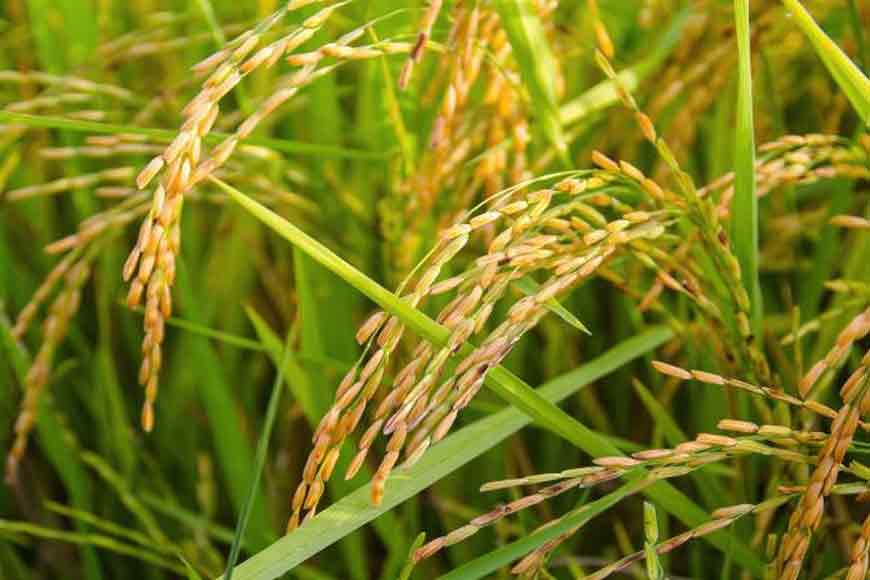Bengal introduces ‘salt-tolerant paddy’ for coastal areas – answer to Climate Change

West Bengal over a couple of years have been rocked by several cyclones, including four major cyclones - Bulbul in November 2019, Amphan in May 2020, Yaas in May 2021 and then Jawad this December. These cyclones highlight the state’s vulnerability to the growing climate crisis. They not only wreaked havoc to life and property in coastal areas, but caused widespread damage to the agriculture sector, breaking embankments, causing saline water to seep into agricultural fields and making irreversible changes to the soil texture.
The cyclone has ravaged cultivable areas in at least 14 coastal districts of the state, particularly in the fragile Sundarbans. Hence the NGOs working in the area felt the need to help farmers largely with salt-resistant paddy seeds. As Biplab Das, of Kishalay Foundation points out: “Sundarbans is an extremely fragile eco-system and is being constantly battered by the ill effects of climate change. The major problem in the area is saline water getting into agricultural fields. So this year after Yaas, we tried working with local farmers distributing seeds of salt resistant paddy varieties like Kerala Sundari and Dudheshwar.”
The rice varieties that have a high yield and fetch a good price in the market do not grow on high-salinity soil. Thus, after cyclones, farmers are unable to sow paddy in the saline fields, facing huge financial losses. Hon’ble Chief Minister of West Bengal, Mamata Banerjee also stepped in, instructing the State Agriculture Department to find a way to help farmers. At present scientists have developed around 12-16 salinity-resistant paddy varieties, including Nona Swarna (saline gold). Nona Swarna was developed by agricultural scientists of Bengal.
“We got Kerala Sundari seeds from Phulia and Dudeshwar seeds were also distributed to farmers, as Dudeshwar is partly saline-resistant and easily available,” added Das. Prasenjit Mandal of Sundarban Foundation, helped Das distribute the seeds in Gosaba block that was worst hit, specially in areas like Rangabelia and Ranipur. “The farmers are growing these two varieties to a large extent in Sundarbans,” said Mandal, who himself is a resident of Gosaba.
After Amphan, the State Government also distributed around 550 metric tonnes of salt-tolerant varieties of paddy seeds to around 91,000 farmers. After Yaas, around 1200 metric tonnes of seeds were distributed in the three coastal districts. Each farmer was given a kit comprising six kilos of seeds along with seed-treating chemicals. Six varieties of paddy seeds – CSR-10, CSR036, CSR-43, Nona-Swarna, Nona Sampad, Lunishree and Dudeshwar were distributed. Nona Swarna was distributed for the first time.
The first set of crops that were sown during the June-July kharif season, are now ready to be harvested. The yield could be a bit less compared to what the farmers used to get from the high yielding variety (HYV) of paddy. “But in such highly saline conditions, the HYV won’t survive and the salinity-tolerant variety will at least ensure some yield,” said Das.
But the major problem seems to be storage of these special paddy seeds and mass scale distribution. As Mandal feels, more and more seeds need to be given on mass scale so that the entire Sundarbans can shift to salinity resistant rice as it will be hot by cyclones over and over again and acres of agricultural land today cannot be harvested due to salinity.
With the 1200 metric tonnes of seeds, salt-tolerant paddy could be grown in around 38,890 hectares of farmland which benefitted around 30,00,00 farmers. With an estimated yield of at least three metric tonnes per hectare, if not more, the production of rice is expected to be around 1.16 lakh metric tonnes. This would be worth around Rs 217.9 crore instead of zero crops because of high salinity levels after the cyclone. On an average an HYV paddy yields around five metric tonnes per hectare.
As the saline water, which entered the villages through breaches in river embankments, took time to recede, community seedbeds were formed on higher grounds where the water had receded, and the ground had dried up. Community seedbeds were prepared so that the seedlings could be raised on time and later could be transplanted in farmlands when the water receded. Each community seedbed sprawled over two to three hectares which served at least 150 to 200 farmers.
Initially, farmers were not aware of the technology and know-how to produce good salt tolerant paddy. Besides, salt-tolerant seeds were not available in the initial stages, as farmers over the past few decades had shifted to high yielding varieties. The government took up the project ‘Nona Swarna’ through which salt-tolerant seeds, produced from traditional varieties and stored in government research institutes, were distributed. Awareness programmes were held through live phone-in, television, and radio talks.










